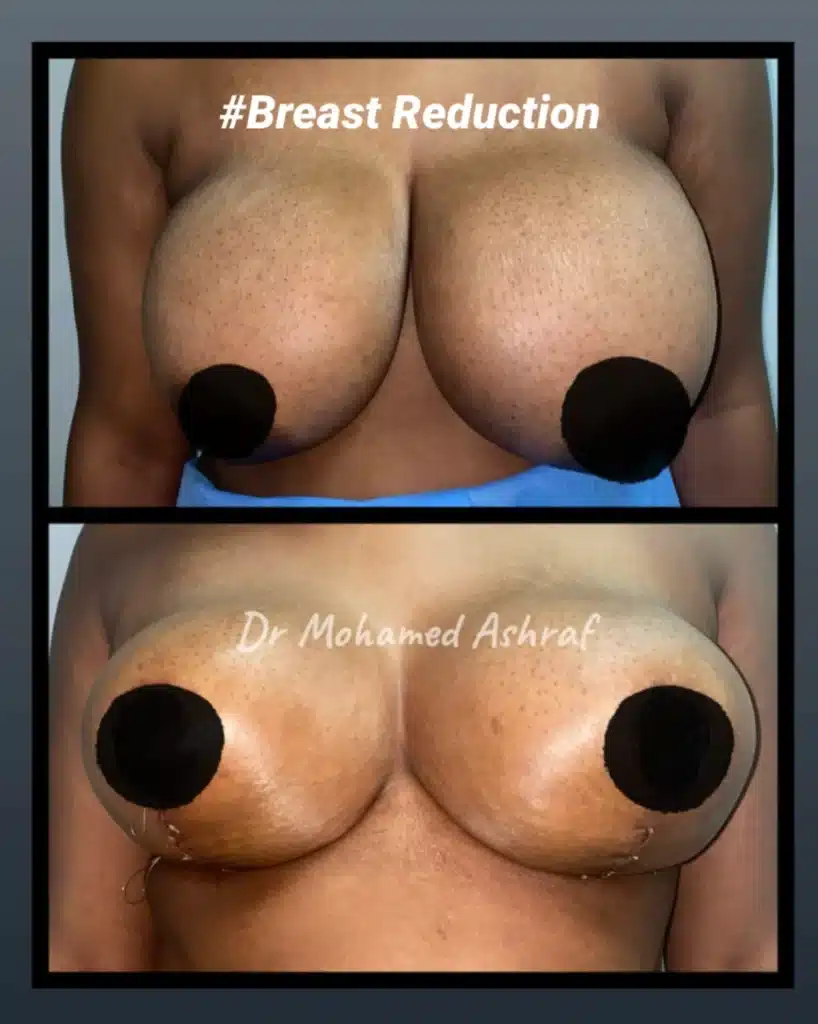Breast reduction surgery, also known as reduction mammaplasty, is a surgical procedure that is performed to reduce the size and weight of overly large or heavy breasts. This surgery can help reduce the physical, emotional, and social discomfort that can be caused by large breasts, including neck and back pain, skin irritation, and difficulty with physical activity.
The surgery involves removing excess skin, fat, and glandular tissue from the breasts to achieve a smaller and more proportionate bustline. The procedure is typically performed using general anesthesia and can take two to five hours, depending on the extent of the reduction.
Who Is a Good Candidate for Breast Reduction Surgery?
Breast reduction surgery is a good option for women who are experiencing discomfort or other negative effects due to the size of their breasts. Good candidates for the procedure include women who have:
- Large, heavy breasts that cause discomfort, such as neck and back pain, skin irritation, or difficulty with physical activity.
- Breasts that are asymmetrical or sagging.
- Nipples that point downward.
- Women who are suffering from skin irritation, rashes, or infections under the breasts
- Difficulty finding clothing that fits comfortably.
It is important to have realistic expectations and to discuss your goals with a qualified plastic surgeon as Dr Mohamed Ashraf to determine if breast reduction surgery is right for you.
The Benefits of Breast Reduction Surgery
Breast reduction surgery can offer a number of benefits, including:
- Alleviation of physical discomfort: Large breasts can cause physical discomfort, including neck and back pain, skin irritation, and difficulty with physical activity. Breast reduction surgery can help alleviate these symptoms by reducing the size and weight of the breasts.
- Improved self-confidence: Women who are self-conscious about the size of their breasts can experience an improvement in self-confidence after breast reduction surgery. This can improve their quality of life and allow them to feel more comfortable in social and intimate situations.
- Better fitting clothing: Women with large breasts often have difficulty finding clothing that fits comfortably and looks flattering. Breast reduction surgery can help resolve this issue by creating a smaller, more proportionate bustline.
- Enhanced physical activity: Large breasts can make physical activity difficult and uncomfortable. Breast reduction surgery can help improve mobility and allow women to participate in physical activities more comfortably and with greater ease.
- Improved symmetry: Women with asymmetrical or sagging breasts can benefit from breast reduction surgery, which can help create a more symmetrical and youthful appearance.
Breast Reduction Surgery Techniques
There are several different breast reduction techniques that can be used to achieve the desired goal
Anchor Incision Technique (inverted T)
The anchor incision technique is the most commonly used technique for breast reduction surgery. This technique involves making an incision that circles the areola, extends downward along the breast crease, and then continues along the underside of the breast. The incision pattern resembles an anchor shape, which is why it is referred to as the anchor incision. Also sometimes called the inverted-T technique as the incisions looks like an inverted T.
The anchor incision technique is typically used for women who have large, heavy breasts and who require a significant reduction in size. The incision allows for the removal of a large amount of tissue, which results in a substantial reduction in the size and weight of the breasts.
Vertical Incision Technique
The vertical incision technique involves making a vertical incision along the underside of the breast. This incision allows for the removal of tissue from the bottom of the breast, which results in a reduction in size and weight. The vertical incision technique is typically used for women who have less tissue to remove and who require a smaller reduction in size.
Liposuction for breast reduction (No scar breast reduction)
The liposuction technique involves using a small, cannula-style instrument to remove fat from the breasts. This technique is typically used in conjunction with one of the other breast reduction techniques, or as a standalone procedure for women who have primarily fatty tissue and who require only a minimal reduction in size.
Choosing the Right Technique
The choice of breast reduction technique will depend on several factors, including the size and shape of the breasts, the amount of tissue to be removed, and the patient’s individual goals and preferences. Dr Mohamed Ashraf will explain the pros and cons of the technique suitable for your case.

Female breast reduction before and after
Possible complications
- Blood collection (hematoma)
- Delayed wound healing
- Wound infection
- Possible alteration in nipple sensation.
- Possibility of failure of lactation
- Nipple and area loss (rare complication)
- Inadequate shape, size or asymmetry
The cost of Breast Reduction in Egypt
The cost varies from one surgeon to another according to his experience , the hospital category and the technique required for breast reduction. Dr Mohamed Ashraf has a huge experience in aesthetic plastic surgeries with many international publications in breast plastic surgeries. You can get an exact quotation for your surgery.
We also offer different forms of payment and credit cards installments with almost all the Egyptian banks. Valu and premium card payments are also available.
Mommy Makeover
Is a term used to describe combining aesthetic surgeries for women after bearing children to restore their breast appearance by breast augmentation , breast lift or breast reduction and their abdomens whether by liposuction or a tummy tuck procedure
Recovery from a breast reduction surgery
The patient is usually stays overnight in the hospital and discharged the following day.
Antibiotics and painkillers are prescribed.
Drains (if were inserted) are removed within 2 days.
You’ll be instructed to wear a medical bra for 3 weeks.
Sutures dissolve on their own
You’ll be asked to attend follow-up visits regularly for 10-15 days after the surgery.
Results
Final shape for your breast reduction procedure will be at around 3 months after the surgery, However you’ll notice the size and weight difference immediately after surgery.


